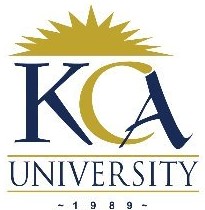
UNIVERSITY EXAMINATIONS: 2014/2015
ORDINARY EXAMINATION FOR THE BACHELOR OF SCIENCE
IN INFORMATION TECHNOLOGY
BIT 4302 TELECOMMUNICATIONS
DATE: DECEMBER, 2014 TIME: 2 HOURS
INSTRUCTIONS: Answer Question ONE and any other TWO
QUESTION ONE
a) Teleworkers require a connection to an ISP to access the Internet. ISPs offer
various connection options. Describe the following main connection
methods used by home and small business users:
(i) DSL (2 Marks)
(ii) Cable modem (2 Marks)
(iii) Satellite (2 Marks)
b) (i) Discuss the FDMA and TDMA concepts as used in telecommunications.
(4 Marks)
(ii) What limits the transmission rate in each multiple access channel?
(2Marks)
c) State five advantages of satellite communications over fibre optics. (5 Marks)
d) Explain briefly four benefits of using VPNs. (4 Marks)
e) (i) Explain briefly two similarities between WLANs and LANs. (2 Marks)
(ii) Explain briefly four differences between WLANs and LANs. (4 Marks)
f) Explain why IP is not well-suited to voice transmission. (3 Marks)
QUESTION TWO
a) IEEE 802.11 is the standard that specifies connectivity for wireless networks.
IEEE 802.11, or Wi-Fi, refers to a collective group of standards. These protocols
specify the frequencies, speeds, and other capabilities of the different Wi-Fi
standards. In this regard, describe the following standards:
(i) IEEE 802.11a (3 Marks)
(ii) IEEE 802.11b (3 Marks)
(iii) IEEE 802.11g (2 Marks)
b) The 802.11 standard states that each conformant wireless LAN must provide nine
services. These services are divided into two categories: five distribution services
and four station services. The distribution services relate to managing ce11
membership and interacting with stations outside the cell. In contrast, the station
services relate to activity within a single cell and deal with station mobility as they
enter and leave cells, attaching themselves to and detach themselves from base
stations.
(i) Describe each of the five distribution services. (5 Marks)
(ii) Describe each of the four station services. (4 Marks)
c) Define the following terms as used in communication systems:
(i) Attenuation (1 Mark )
(ii) Noise (1 Mark )
(iii) Distortion (1 Mark )
QUESTION THREE
a) Define the following terminologies as used in telecommunications:
(i) Simplex (1 Mark)
(ii) Half Duplex (1
Mark)
(iii) Full Duplex (1Mark)
(iv) Connection-oriented network service (1
Mark)
(v) Connectionless-oriented network service (1 Mark)
b) Describe briefly the six major transmission functions that are required in long
range communications. (6 Marks)
c) Distinguish between “piconet” and “scatternet” as used in Bluetooth technology.
(4 Marks)
d) Discuss briefly the importance of error detection and correction, flow control and
recovery in data communications. (5 Marks)
QUESTION FOUR
a) (i) What can the categorization of communication satellites be based on?
(3 Marks)
(ii) What can the categorization of satellite orbits be based on? (3 Marks)
b) Discuss the use of VSATs for communications highlighting a description of what
they are, how they operate, underlying reasons for their use, data rates and
frequency bands. (10 Marks)
c) Historically, FDMA has the highest usage and application of the various access
techniques considered in satellite communications. State two advantages and two
disadvantages of FDMA. (4 Marks)
QUESTION FIVE
a) With the aid of diagrams, given the bit stream below, encode it using:
1 0 1 1 0 0 1 0
(i) Frequency Shift Keying (FSK) (2 Marks)
(ii) Bipolar -AMI (3 Marks)
(iii) Differential Machester (3 Marks)
1 1 0 0 1 0 1 0
b) State the following basic features of GSM:
(i) Access method (1 Mark)
(ii) BS transmission band (1 Mark)
(iii) MU transmission band (1 Mark)
(iv) Channel bandwidth (1 Mark)
(v) Users per channel (1 Mark)
c) Explain briefly the four major constraints that face converged enterprise
networks. (4 Marks)
d) Explain briefly three techniques can be used to increase capacity in mobile
networks. (3 Marks)
